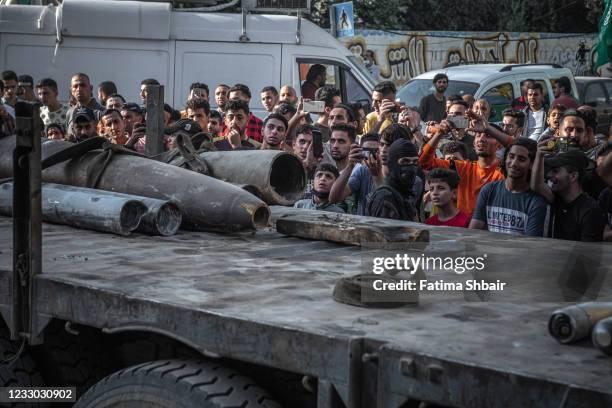Unexploded Ordnance in Gaza: A Growing Safety Concern
Unexploded bombs and shells buried in the rubble of Gaza pose a significant threat to public safety, potentially endangering thousands as the region begins to recover from prolonged conflict. An alarming report from Handicap International – Humanity & Inclusion highlights the staggering volume of ordnance dropped during 15 months of warfare between Israel and Hamas. According to Simon Elmont, a demining expert with the organization, the sheer quantity of munitions is staggering, with an estimated nine to thirteen percent failing to detonate upon impact.
Elmont emphasized that the contamination level in Gaza is extensive, with much of the unexploded ordnance lying hidden beneath the surface and within the debris of destroyed buildings. As a ceasefire took effect on January 19, a fragile calm settled over the region. However, this pause in hostilities has not alleviated the danger posed by the remnants of war.
The Risk of Return
As hundreds of thousands of displaced Palestinians start to return to their homes to salvage belongings and begin the arduous task of rebuilding, the risks associated with unexploded ordnance escalate. Elmont cautioned that the potential for injuries and fatalities is high, predicting numerous incidents as people sift through rubble in search of personal effects. “The potential is for hundreds, if not thousands, of incidents where people potentially are injured. And unfortunately, some of those injuries will be fatal,” he stated.
The expert further remarked on the troubling reality that returning residents will likely enter damaged structures and inadvertently disturb ordnance. He recounted a recent incident where a child was hospitalized after being struck by a grenade thrown by another child who mistook it for a toy. Such occurrences highlight the need for urgent safety measures in a region still grappling with the aftermath of conflict.
Challenges in Demining Efforts
The task of making Gaza safe from unexploded ordnance is fraught with challenges, particularly due to the inability to relocate the population during decontamination efforts. Elmont noted that there are no viable options for moving residents away from danger zones, making the situation unique and complicated. “The problem in Gaza is that there is nowhere to move them to,” he explained.
Additionally, the absence of a functioning security force to enforce safety protocols further complicates clearance operations. Elmont pointed out that the lack of authority to maintain safety cordons during demining efforts exacerbates the already precarious situation. This confluence of factors presents a daunting challenge as the region attempts to recover from the devastating impacts of war.
The Human Toll of Conflict
The conflict in Gaza, which ignited on October 7, 2023, following a Hamas attack on Israel, has had a catastrophic human toll. An AFP tally based on official Israeli figures reports that the initial assault resulted in the deaths of 1,210 individuals, predominantly civilians. In retaliation, Israeli military actions have claimed the lives of at least 48,181 people in Gaza, according to data from the territory’s Hamas-run health ministry. The United Nations has deemed these figures credible.
As the region grapples with its losses and the dangers of unexploded ordnance, the path to recovery remains fraught with uncertainty. The combination of ongoing threats from unexploded munitions and the immense human cost of the conflict underscores the urgent need for comprehensive safety measures and support for the affected populations.







